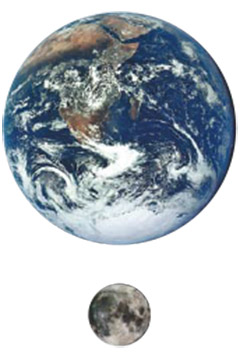Students observe colors in the flame of a burning candle to explore connections between matter, light, color, and temperature — basic concepts of matter and energy.They elaborate on these basic concepts in a new context of astronomy and stars. When matter gets hot enough, it emits visible light.
You are here
Lesson Plans
Properties of Dust
Students carry out a scientific investigation of dust in their classroom, then extend their experience to properties of dust in space.
Super Gelatin
Students measure the angles of refraction of laser light traveling through gelatin, then plot their data to calculate the gelatin’s index of refraction.You may choose from two different "Elaborate" activities:
Telescope Allocation Committee
This activity acquaints the students with the telescopes and instruments available at an astronomical observatory: McDonald Observatory.Astronomers apply for observing time on research telescopes.
Astro-Madness
In this activity, students learn about the different telescopes and instruments that are available at McDonald Observatory using the "What Are Astronomers Doing" web site.They use this information to assist a group of scientists in deciding which of McDonald Observatory's resources will best suit
Delta, Delta, Delta
In this experiment, students construct an equilateral triangle using graph paper, pencil, protractor and a ruler.
Hot Air
Students witness light refracting through air everyday.On hot days, "ripples" rise from the ground or roadways. Stars twinkle in the night sky. The Sun looks squashed on the horizon at sunrise and sunset.
Spectroscope
This lesson guides students to build a spectroscope, use it as tool, and interpret their observations by applying concepts of conservation of energy and properties of matter.Students will observe all three kinds of spectra: continuous, emission, and absorption.
Mirror, Mirror
In this activity, students test the Law of Reflection based on experimental evidence.However, the back-silvered glass mirrors present a twist.
Planet Tours
Planning to take a vacation soon? Visit Phobos! Small and cozy, Phobos orbits the fourth planet from the Sun in less than eight hours. From your observation deck on Phobos, you will have a superb view of Mars.
Rock Cycle
This activity combines the concept of Earth’s rock cycle with the characteristics of other planets in the solar system. After learning about Earth’s rock cycle and the basic characteristics of objects in the solar system, students can consider how to extend this concept to other objects.
Reflective Solar Cooker
This reflective solar cooker uses the Sun's energy to cook marshmallows. The target cooking area is the space where the light concentration is greatest. Never look directly at the Sun! It could damage your eyes. Don't allow the cooker to reflect sunlight into your eyes.
Sunspots
The Sun is a huge sphere of gas. The visible layer of the Sun, which we view as the surface, is the photosphere. Its temperature is about 6,200 degrees Celsius (10,340 degrees Fahrenheit). Above the surface are the chromosphere and corona.
The Milky Way
Stretching across the dark night sky, not easily visible when the Moon is in the sky, is a faint irregular glowing strip of light. For thousands of years peoples of various cultures tried to explain what they saw, sometimes using stories. Here are some examples:
Scale Models
 Without being informed of the expected product, the students will make a Play-doh model of the Earth-Moon system, scaled to size and distance.
Without being informed of the expected product, the students will make a Play-doh model of the Earth-Moon system, scaled to size and distance.


